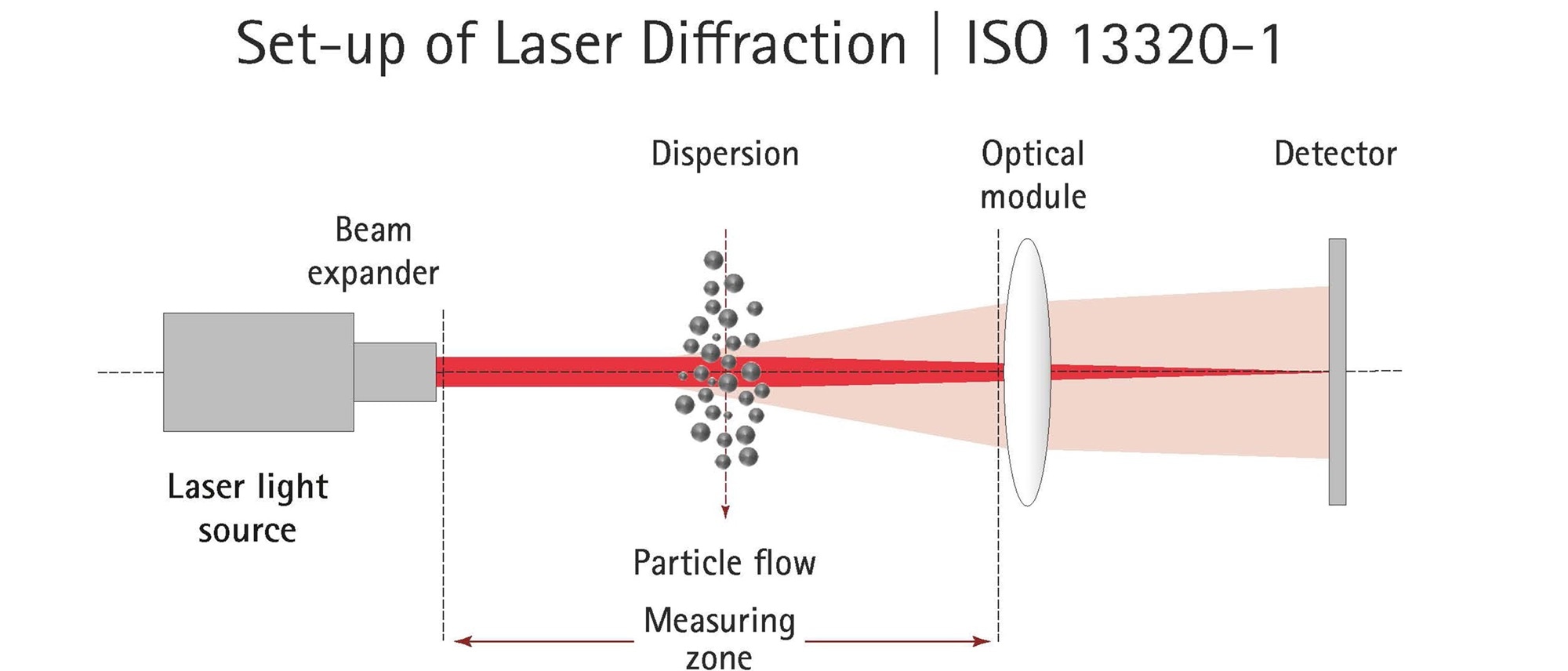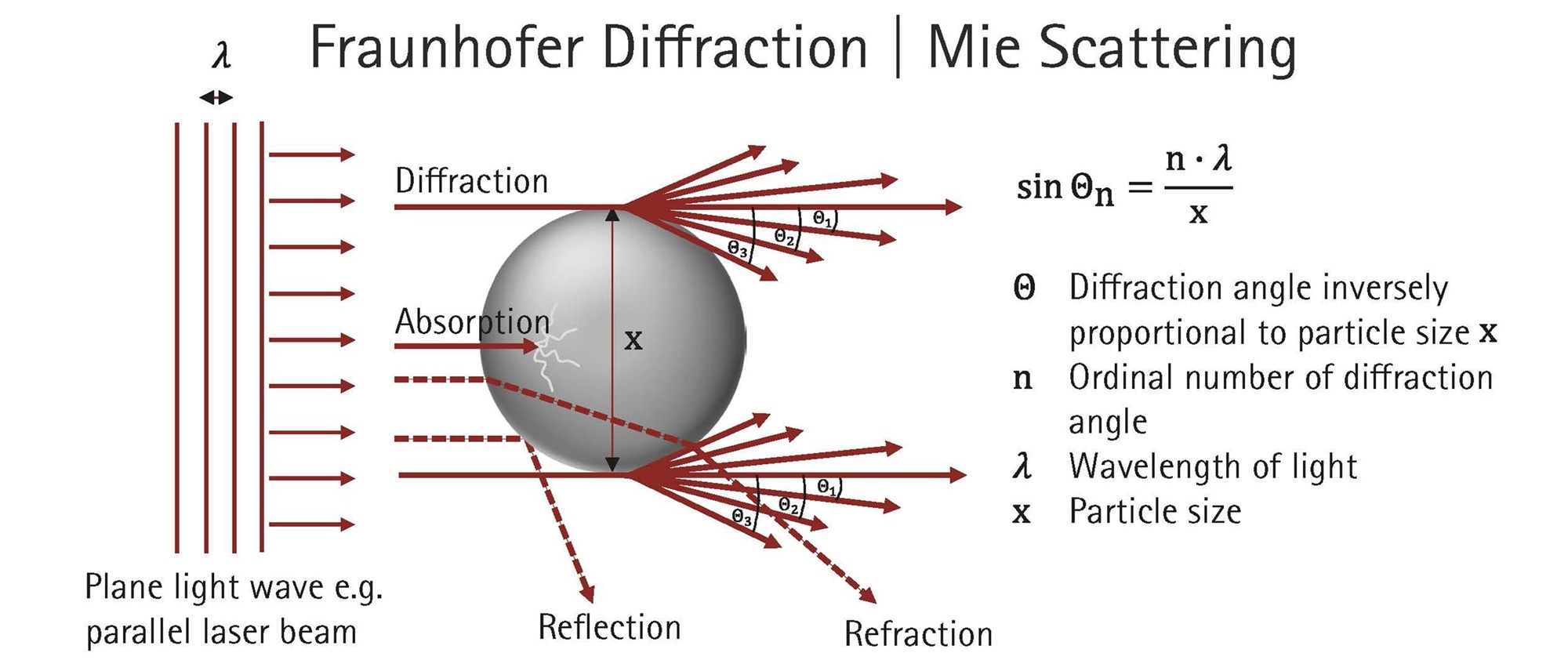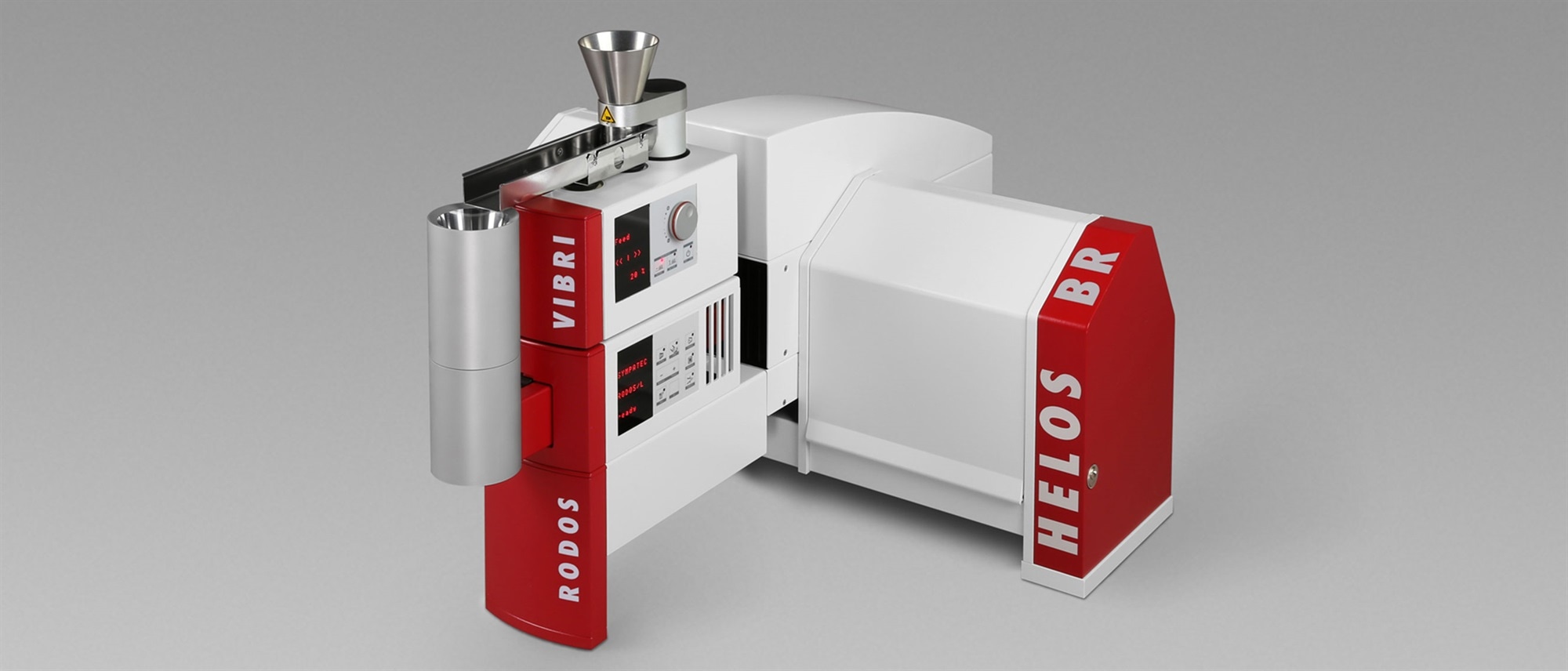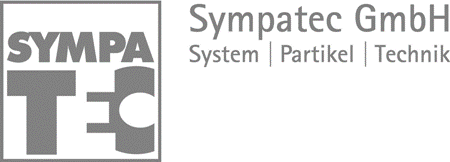Laser diffraction is recognized as the most reliable light scattering method for analyzing particle size distributions across a range from submicron to millimeter particles.
Optical Set-Up and Evaluation Theory
The diffraction set-up utilizing a parallel laser beam enables the measurement of spatially extended aerosols, regardless of particle position within the measuring zone.

The evaluation using the Fraunhofer diffraction model is preferred for most applications as it is independent of the optical properties of the measured material.
In contrast, calculating the particle size distribution using Mie theory requires knowledge of the refractive index and is only recommended when the optical parameters of diffraction, absorption, and reflection are known.

Laser Diffraction in Laboratory and Process
The established HELOS laser diffraction series provides advanced technology for particle size analysis of powders, granules, suspensions, emulsions, sprays, and inhalants.
Its modular system design, combined with a wide range of dispersing and dosing units, allows for flexible adaptation to diverse industrial and research applications.

Dispersion and Dosing
The quality of dispersion is crucial for the significance and reliability of the analysis. Dry products should be dispersed as powders, while wet products are best analyzed as suspensions or emulsions.
Sprays and inhalants are optimally characterized as aerosols. By selecting the appropriate dispersion unit, HELOS sensors can be optimally configured for the products being analyzed. The interaction with various dosing systems facilitates efficient and product-specific control of different sample types and quantities.
Source: Sympatec GmbH
| Specifications | Quality of measurement results |
| Sensor |
HELOS/BR |
HELOS/KR |
HELOS/KR-Vario |
| 0.1 - 875 μm |
0.1 - 8,750 μm |
0.1 - 8,750 μm |
|
| plus MYTOS variations for process |
| Principle |
Laser diffraction |
λ=632.8 nm (red), Pout=5 mW |
| Measurement |
Multi-element detector 31 semi-circular segments (180°) |
| |
Acquisition rate |
2,000 diffraction patterns per s |
| Measuring range |
Focal length in mm |
R1 (f=20) to R8T (f=5,000) |
| Results |
Accuracy |
σ < 1 % |
mean SD |
| Repeatability |
σ < 0.04 % |
typical wet |
| |
σ < 0.3 % |
typical dry |
| Comparability |
σ < 1 % |
mean rel. SD |
| |
|Δx50| < 2.5 % max. rel. deviation |
| Software |
WINDOX | PAQXOS |
Control and evaluation software |
Quality
assurance |
Certification |
Standardized test procedure with reference material |
| Validation |
according to FDA regulations |
| Compliance |
ISO 13320 | FDA 21 CFR 11 |

This information has been sourced, reviewed and adapted from materials provided by Sympatec GmbH.
For more information on this source, please visit Sympatec GmbH.